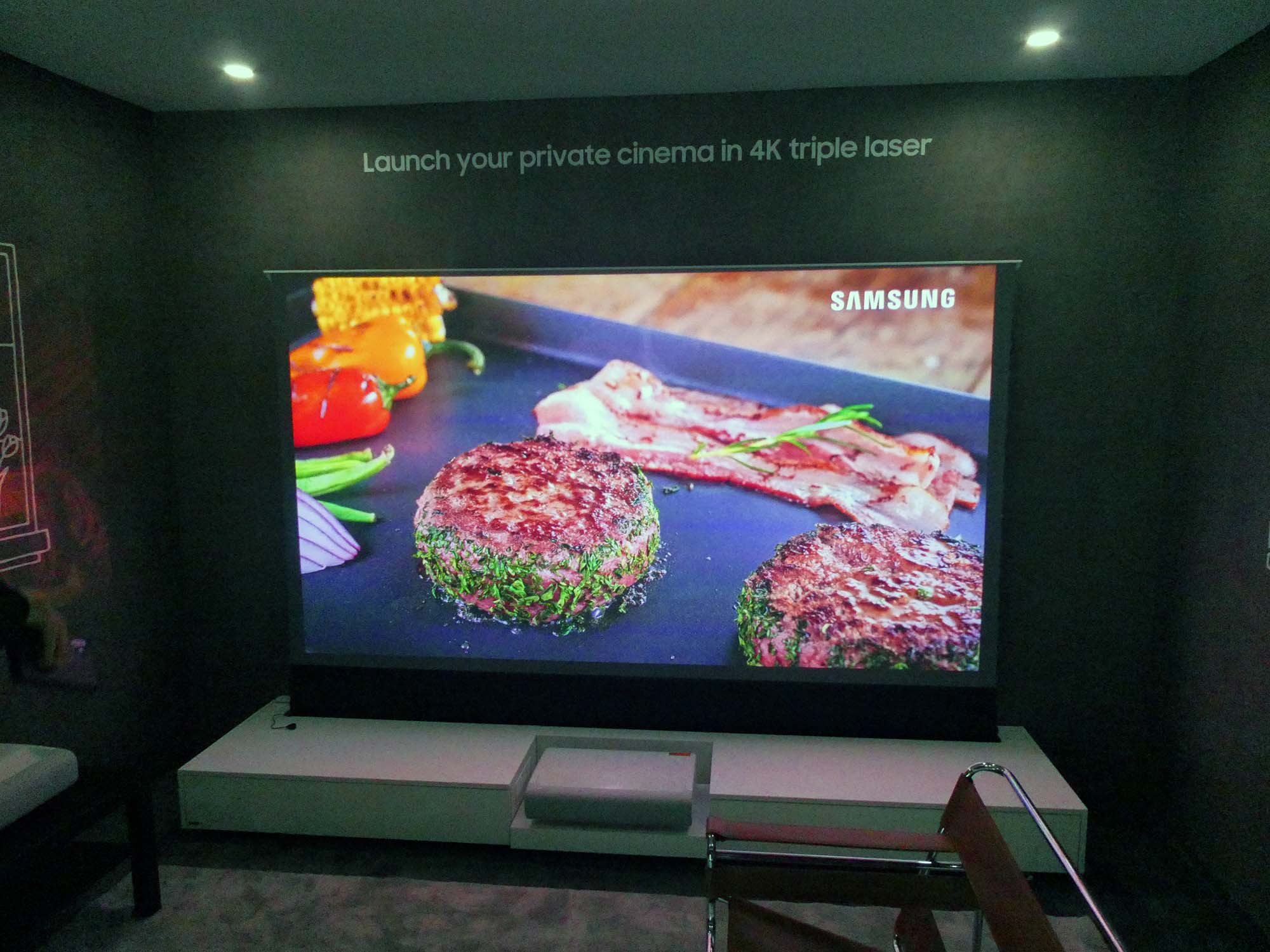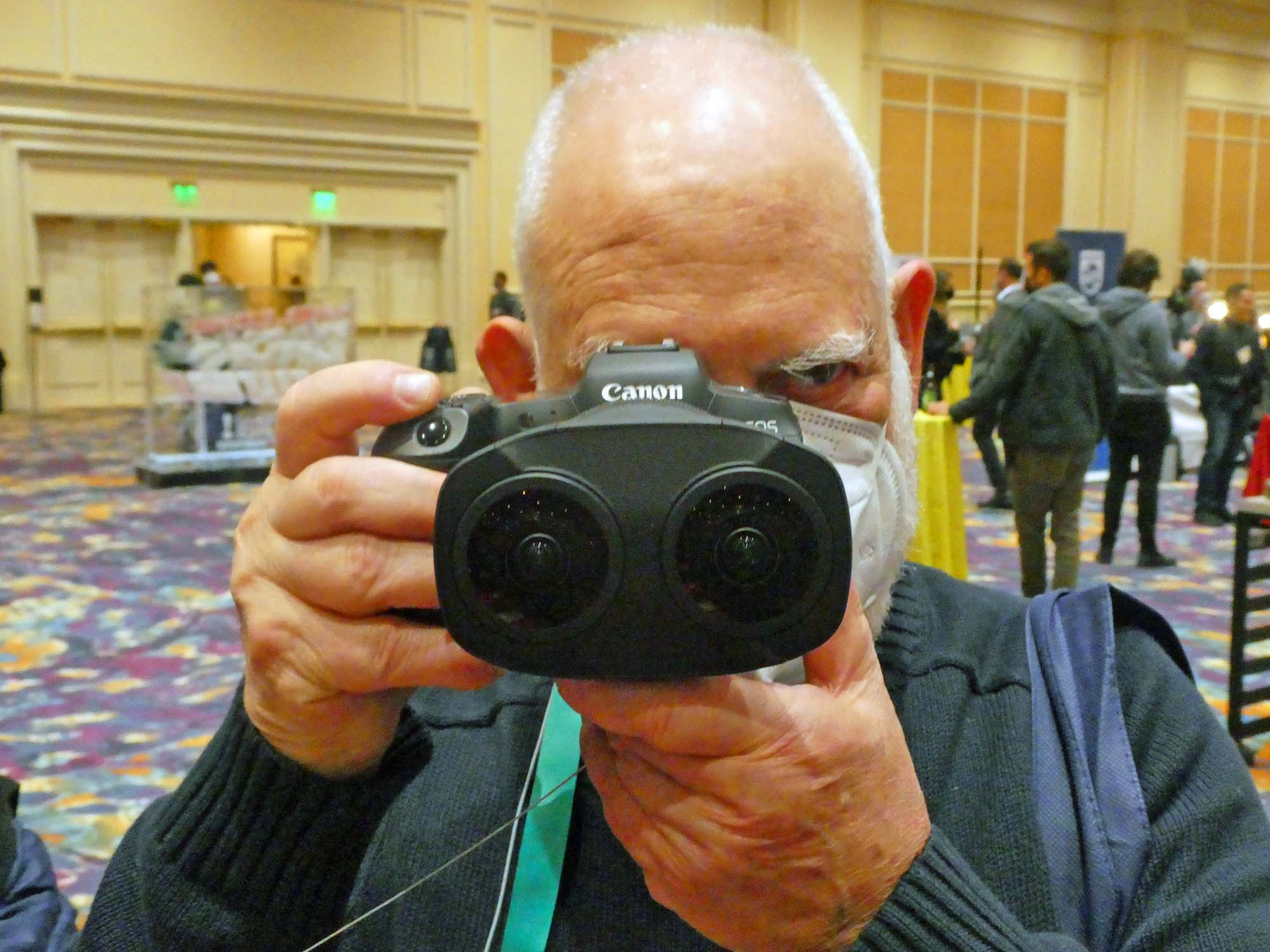CES 2022: Full Speed Ahead for Displays
This year’s Consumer Electronics Show went ahead under the shadow of a COVID-19 surge. It made for a very strange but ultimately rewarding experience.

The Consumer Electronics Show has been surprising me for more than two decades, but I wasn’t quite sure what to expect this year. The last live CES was w-a-y back in early January 2020, just as the first reports of the coronavirus were emerging. That show had more than 4,000 exhibitors and north of 100,000 attendees, but a year later, the show was forced to go virtual, hammering online attendance and overall interest.
Hence, the decision to hold this year’s event in Las Vegas, NV, come hell or high water. The Consumer Technology Association took plenty of precautions, including requiring proof of vaccination, mask mandates, and free Abbott Labs COVID-19 tests to all attendees. Even so, some major exhibitors announced early in the fall that they’d pass on the show, and more of them (GM, Mercedes, Microsoft, LG, Panasonic, Microsoft, T Mobile, Intel, and AMD) pulled out just weeks before the show.
Outstanding OLED Offerings
However, in order to preserve coveted booth locations for 2023, some of those exhibitors put together bare-bones “exhibits,” like LG’s so-called “Life’s Good Lounge” (a massive chipboard floor with foot stools and QR codes to learn about their products online) and Panasonic’s enormous empty hall with projection mapping showing a short video about the company’s focus for 2022.
Others weren’t as jittery. Hisense and TCL, two of the top five TV brands worldwide, had enormous booths with lots of product. Sony had just four exhibits in its usual spot: two electric cars, a drone, a “mini” satellite, and PlayStation 5. On the other hand, Samsung went the whole mile, building its usual enormous walled-off booth and stuffing it with product. But visitors had to register for timed tickets and prove they were vaccinated to get in.
Even with all this, the trip was still worthwhile. The diminished attendance and lower number of exhibitors made it possible to see all three halls of the Las Vegas Convention Center—Central, North, and the new West Hall—in one day. Here are some of the more interesting display and imaging products I saw.
Improved UST Projectors and More
Samsung Display Company’s new QD-OLED TV lived up to the hype. This twist on electronic imaging combines a blue OLED emitter with green and red quantum dots to produce a purely emissive display with both highly saturated colors (90 percent coverage of the BT.2020 HDR color gamut) and high brightness (1500 cd/m2 small area, although I think after calibration that will drop a bit). While not shown publicly, it is quite an impressive display, and will be available in 55 and 65-inch TV sizes, along with a 34-inch computer and gaming monitor.

LG Electronics has expanded its line of 4K OLED TVs by adding a 42-inch size to their 48-inch model introduced in 2020. It will be part of the C2 series and is aimed at gamers, as it’s small for today’s homes. LG’s upscale 2022 G2 series features a new 83-inch model and (as far as I know) the world’s first 97-inch OLED TV to go along with 55, 65, and 77-inch models. Unlike the new QD-OLED, these are more conventional white OLEDs equipped with RGBW pixel stripes.
The professional video industry's #1 source for news, trends and product and tech information. Sign up below.

LG Display had (as usual) some very cool concept products in their virtual demos, including a reclining Media Chair, a modern “relaxation device” that combines a 55-inch OLED TV with a tiltable recliner. The curved screen has a built-in sound system Cinematic Sound OLED (CSO), whereby the curved screen vibrates to make its own sound without the use of external speakers. LG also showed the Virtual Ride, an indoor stationary bicycle with three vertical 55-inch OLED displays in front of and above it that form one large, curved display that gives users an immersive view both forward and above. The top display has a curvature radius of 500mm.
Transparent OLED screens are growing in popularity. These displays have 40 percent light transmissivity, and the cool engineers in LGD’s Paju “candy store” unveiled some concept T-OLED products. The OLED Shelf combines two transparent OLED displays, one above the other, for a home TV/display that adds to room décor. A retail version, Show Window, with four 55-inch transparent OLEDs, is likely of greater interest to our marketplace. And Smart Window applies T-OLED technology to conference rooms, transforming ordinary windows into screens for videoconferencing, presentations, and entertainment.
As expected, Samsung had three new microLED televisions on display, with 89, 101 and 110-inch sizes available. The press release claims these displays support 20-bit grayscale depth, which would require an insane amount of image processing! (Perhaps they meant 10-bits per color channel, totaled up?) All three models have 4K resolution and are still pricey, compared to LCD and OLED TVs, but they do make for spectacular pictures. I was surprised to see their light output throttled—with some HDR clips, peak (specular) white only hit 1,300 cd/m2 as measured with my Sekonic meter, a luminance level that isn’t much different from Samsung’s high-end QLED TV sets.
Hisense, TCL, Samsung, BenQ, and others showed ultra-short throw 4K laser DLP projectors, capable of lighting up screens as large as 120 inches. (LG also has a projector in this category.) The image and color quality of these projectors have come a long way over the past decade, and UST is a far less expensive way to get to super-large screen sizes. BenQ also showcased the X3000i 4K LED projector, a 3000-lumens solid-state front projector aimed at the gaming market that had excellent color saturation.

Canon unveiled an autostereo camera, complete with dual-view electronic viewfinder. The Canon RF 5.2mm f/2.8L Dual Fisheye is a lens for digital interchangeable lens cameras that can be used to capture 180-degree VR video, and it was about the only significant new camera announcement at the show. Canon’s AMLOS (“Activate My Line of Sight”) PTZ camera also attracted interest. It can provide multiple views of the same event for different participants, and also incorporates hand gesture recognition to do things like capture screen shots from whiteboards, using some onboard smarts to crop and resize.
Finally, while not particularly relevant to displays, Sony’s two Vision-S electric cars (a sedan and an SUV) represent a “toes in the water” exploration of the EV market through a new subsidiary, Sony Mobility. Both vehicles incorporate as many as 40 of the company’s CMOS sensors, possibly leading to an autonomous car at some point. Also noteworthy: Televisions were MIA this year, something unimaginable at CES, though it should be noted that Sony is coming out with a line of QD-OLED televisions.
TCL and Hisense more than made up for that with full lines of 4K and even some 8K TVs. TCL made some waves by announcing a 98-inch 4K HDR LCD TV for just $8,000, while Hisense showed the P9F professional dual-cell LCD monitor. This product first appeared mysteriously at CES 2020 and now has a model number, although no one could tell me anything more about it other than it has a peak luminance of 1,000 cd/m2, covers 80 percent of the BT.2020 color gamut, and is “Great for Cinema!” At least, that’s what the sign above it said…
Pete Putman, CTS, KT2B, is the president of ROAM Consulting.
This article originally appeared on TV Tech's sister publication, AV Network.
Pete Putman, CTS, KT2B, is the president of ROAM Consulting.

